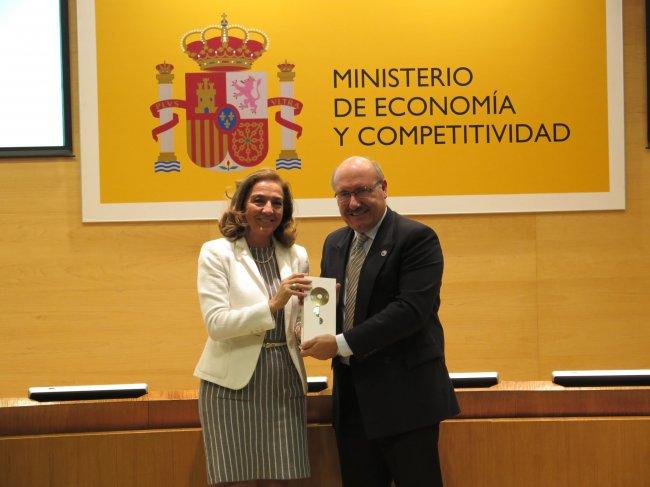It may interest you
-
 A delegation from the Instituto de Astrofísica de Canarias (IAC), led by its Director, Valentín Martínez Pillet, is attending the Big Science Industry Forum Spain 2025 (BSIFS2025), the main national meeting dedicated to the Big Science Industry, on 3 and 4 December. The team is presenting the centre’s scientific and technological advances and strengthening strategic links with companies, technology centres and international scientific infrastructures. The IAC strengthens its presence at Spain’s largest Big Science Industry forum The Big Science Industry Forum Spain 2025, organised by CDTIAdvertised on
A delegation from the Instituto de Astrofísica de Canarias (IAC), led by its Director, Valentín Martínez Pillet, is attending the Big Science Industry Forum Spain 2025 (BSIFS2025), the main national meeting dedicated to the Big Science Industry, on 3 and 4 December. The team is presenting the centre’s scientific and technological advances and strengthening strategic links with companies, technology centres and international scientific infrastructures. The IAC strengthens its presence at Spain’s largest Big Science Industry forum The Big Science Industry Forum Spain 2025, organised by CDTIAdvertised on -
 An international team of researchers, including researchers from the IAC, have studied in detail a remarkable couple of dwarf galaxies “dancing with each other” inside an unpopulated area of the Universe. This uncommon pair of low-mass galaxies merging “in the middle of nowhere”, near the center of a cosmic void, offers a unique view of one-on-one interactions and of the evolution of galaxies located in very low density environments. Researchers from the Calar Alto Void Integral-field Treasury surveY (CAVITY) project, led by the University of Granada, have discovered a rare and ongoingAdvertised on
An international team of researchers, including researchers from the IAC, have studied in detail a remarkable couple of dwarf galaxies “dancing with each other” inside an unpopulated area of the Universe. This uncommon pair of low-mass galaxies merging “in the middle of nowhere”, near the center of a cosmic void, offers a unique view of one-on-one interactions and of the evolution of galaxies located in very low density environments. Researchers from the Calar Alto Void Integral-field Treasury surveY (CAVITY) project, led by the University of Granada, have discovered a rare and ongoingAdvertised on -
 The Museo de la Ciencia y el Cosmos, part of the Organismo Autónomo de Museos y Centros del Cabildo de Tenerife, will host a conference by the astrophysicist and 2006 Nobel Laureate in Physics, John Mather, entitled ‘Unsolved mysteries of physics and astronomy’, on Friday 9th May. Mather receives this week the recognition as Doctor Honoris Causa of the Universidad de La Laguna (ULL) with the sponsorship of the researcher of the Instituto de Astrofísica de Canarias (IAC) and Doctor Honoris Causa of the ULL, John Beckman. Mather's lecture, which will be in English, will be presented by theAdvertised on
The Museo de la Ciencia y el Cosmos, part of the Organismo Autónomo de Museos y Centros del Cabildo de Tenerife, will host a conference by the astrophysicist and 2006 Nobel Laureate in Physics, John Mather, entitled ‘Unsolved mysteries of physics and astronomy’, on Friday 9th May. Mather receives this week the recognition as Doctor Honoris Causa of the Universidad de La Laguna (ULL) with the sponsorship of the researcher of the Instituto de Astrofísica de Canarias (IAC) and Doctor Honoris Causa of the ULL, John Beckman. Mather's lecture, which will be in English, will be presented by theAdvertised on
